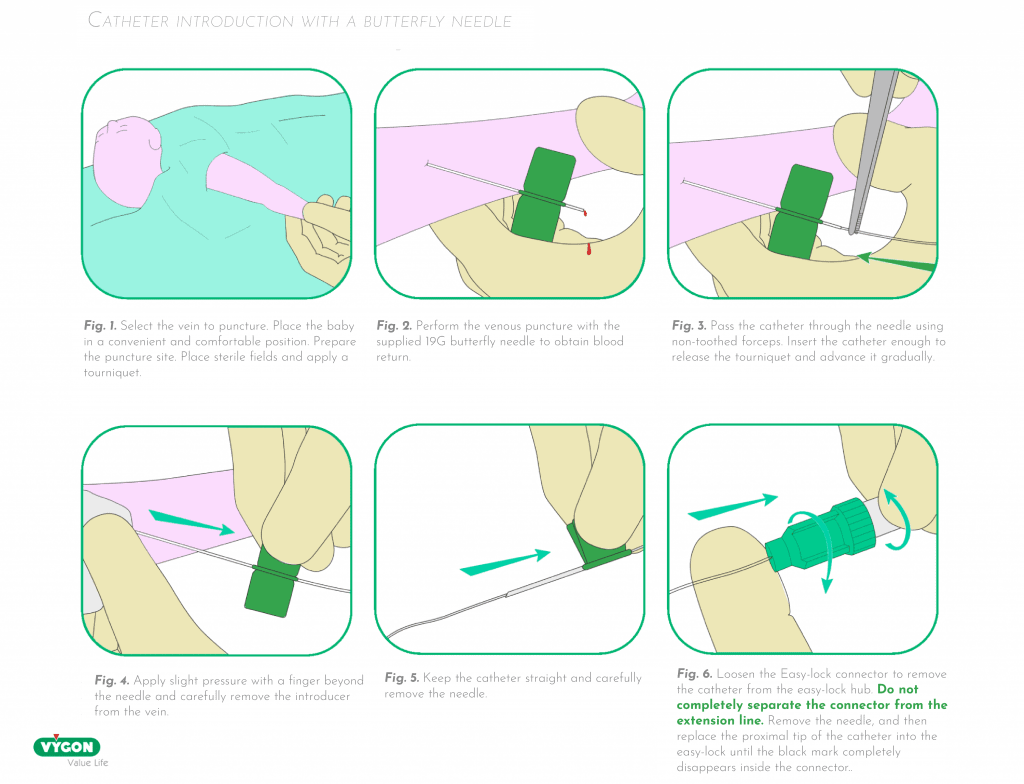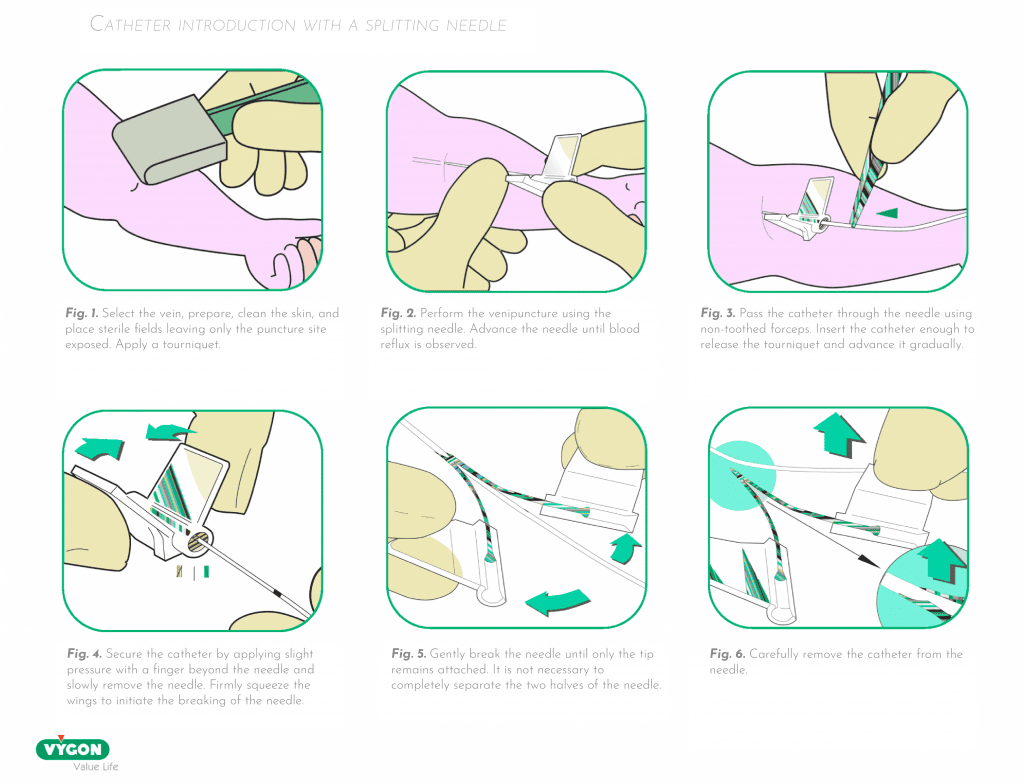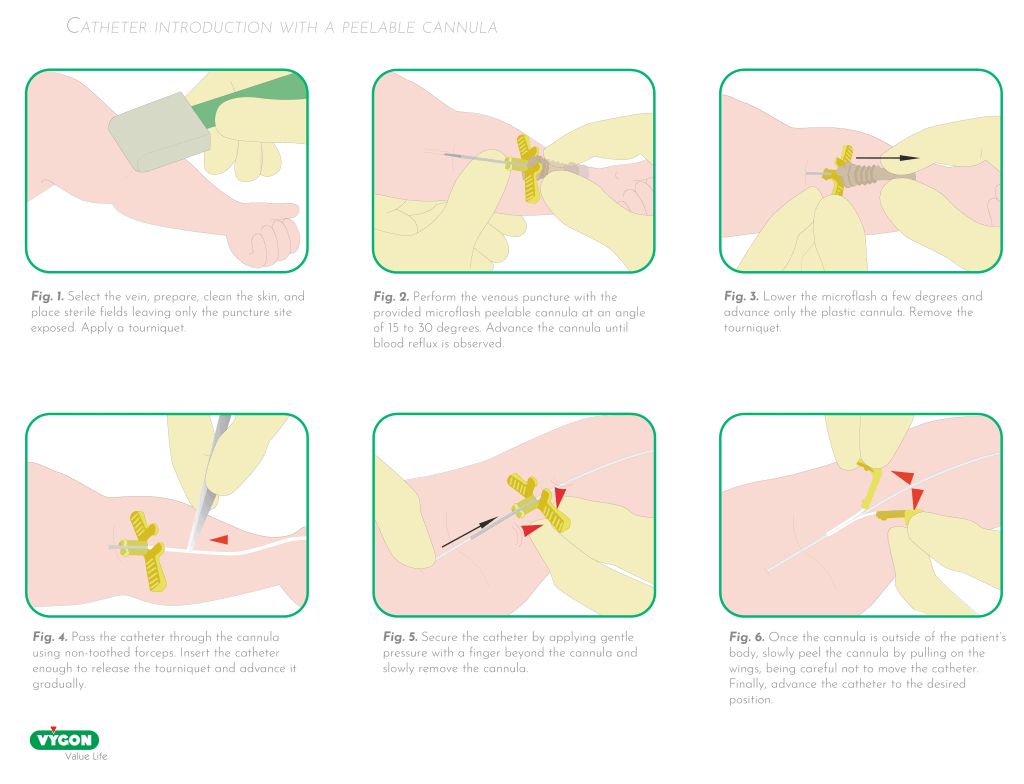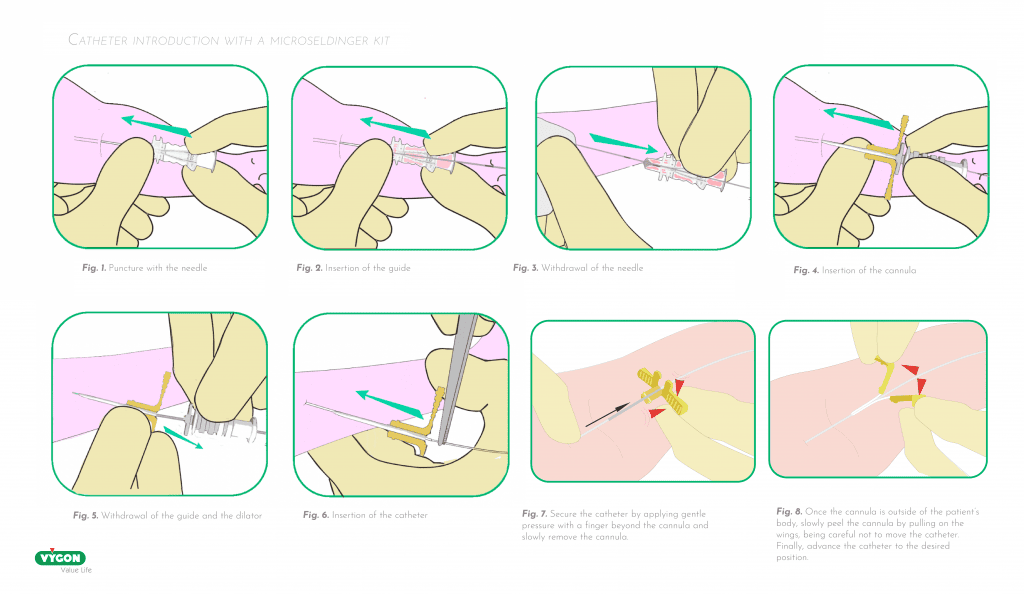The challenge of achieving correct catheter placement at the first attempt in neonates and premature infants has led healthcare professionals to prioritise minimising the trauma caused during insertion. Choosing the right catheter and introducer is crucial to reducing complications and ensuring the proper care of these patients’ venous capital. This article compares the most commonly used introducers for placing peripherally inserted central catheters (PICCs) in neonates and low-birth-weight preterm infants.
Butterfly needle
The butterfly needle has been a well-known device among NICU practitioners for years, as it was the introducer supplied with the first neonatal PICC on the market. This familiarity makes it one of the most well-known introducers in terms of insertion techniques. It is used exclusively with epicutaneo-cava catheters, as it is the only type of neonatal PICC line that allows its removal (catheter with easy-lock connection).
ADVANTAGES
- Widely used
- Lower risk of clot formation due to the straight path of the needle (no hub nor cannula)
- Easy to grasp thanks to two flexible flaps and the thinness of the device
DISADVANTAGES
- It makes it impossible to use a one-piece catheter, as the needle would not be removable.
- Therefore, it can only be used with a catheter with a special connection. This increases the risk of infection due to additional manipulation.
- The needle is longer than other introducers (27 mm) with a large diameter of 19G: these characteristics make it too thick for the veins of premature infants.
- The blood reflux is not immediately detected due to the opacity of the needle.
- Inserting the catheter into the introducer is delicate because the diameters are very similar (the proximal end of the needle is not widened).

Splitting needle
This breakable device with a clear rigid pavilion and wings can be used with any neonatal PICC, 1Fr or 2Fr, ensuring the appropriate size is selected for the patient’s vein.
ADVANTAGES
- Thin (24G-0.7mm or 20G-0.95mm) and short (respectively 19 mm and 25 mm) introducer that allows catheter insertion into very small veins
- Can be used with a one-piece PICC, reducing the risk of infection
- Facilitates catheter insertion into the introducer with a wide opening pavilion
DISADVANTAGES
- Learning curve, especially when switching from the butterfly needle technique: it is not always easy to know the pressure required to break the needle
- Must be done methodically to avoid complete separation of the device, which would result in two sharp ends during disposal
- Need to wait for blood return into the pavilion to confirm it is in the vein

Peelable cannula
This is a splitable introducer characterised by a short cannula and an internal needle (similar to short peripheral catheters).
ADVANTAGES
- Short 18mm introducer with a diameter of 20G (1.1mm), whose cone-shaped hole allows easy insertion of the catheter
- Easy handling thanks to its flat fins and the possibility of having grooves to facilitate grasping; its separation is comfortable as the cannula is made of flexible plastic
- Can be used with one-piece PICCs, reducing the risk of infection
- Offers an additional advantage when fitted with a distal orifice on the needle, allowing detection of insertion into the vein with instantaneous blood reflux
- Can be equipped with a stopper to prevent blood leakage
DISADVANTAGES
- The sensation differs from that of a butterfly needle or peelable needle, requiring a learning curve
- Not available in very small diameters for 1Fr catheters

Microseldinger kit
This introduction kit is designed for the insertion of 1Fr and 2Fr catheters using the modified Seldinger technique. It consists of:
- A 24G (0.55mm), 19mm puncture needle
- A 20G (1.1mm), 18mm peelable cannula
- A 0.3mm nitinol guide with a blunt end
ADVANTAGES
- Minimises invasiveness during insertion:
- The 0.55mm puncture needle allows for a very fine and accurate puncture.
- The vein is secured with the flexible guidewire, reducing the risk of transfixion compared to other introducers.
- The risk of endothelial trauma is reduced thanks to the small ball at the tip of the guidewire.
- The dilator and sheath assembly has a profiled tip for smooth insertion.
- Minimises the risk of vein loss: guide stabilisation is not as critical as with a needle because:
- It is inserted over a longer venous pathway.
- The guidewire is flexible and not sharp.
- The kit enables puncture of veins that are difficult to access (due to exhausted venous capital and/or risk of collapse) and deeper veins (not visible).
DISADVANTAGES
- It has the highest learning curve of all introducers, as it is very different from the introducers typically used in neonatology, with multiple components and steps. Training and practice are key to becoming familiar with this technique

What about the short cannula?
The short cannula or catheter is not recommended unless as a last resort. Since it cannot be removed, it must remain on top of the catheter during use, increasing the risk of infection and mechanical damage (obstruction and phlebitis). Additionally, specific PICCs are required to securely fix the cannula to the catheter.



